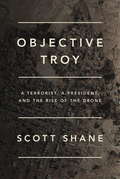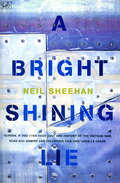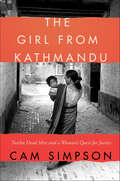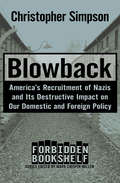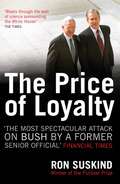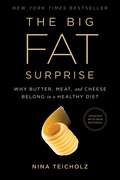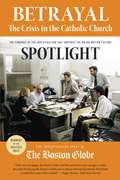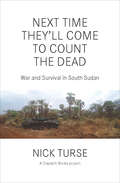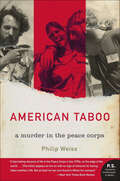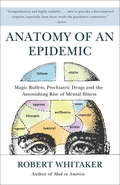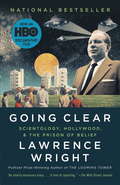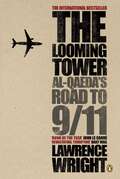Special Collections
Investigative Reporters and Editors Award
Description: The annual IRE Awards recognize outstanding investigative work and help identify the techniques and resources used to complete each story. This collection includes award winners and finalists. #award
- Table View
- List View
Objective Troy
by Scott ShaneObjective Troy tells the gripping and unsettling story of Anwar al-Awlaki, the once-celebrated American imam who called for moderation after 9/11, a man who ultimately directed his outsized talents to the mass murder of his fellow citizens. It follows Barack Obama's campaign against the excesses of the Bush counterterrorism programs and his eventual embrace of the targeted killing of suspected militants. And it recounts how the president directed the mammoth machinery of spy agencies to hunt Awlaki down in a frantic, multi-million-dollar pursuit that would end with the death of Awlaki by a bizarre, robotic technology that is changing warfare--the drone. Scott Shane, who has covered terrorism for The New York Times over the last decade, weaves the clash between president and terrorist into both a riveting narrative and a deeply human account of the defining conflict of our era. Awlaki, who directed a plot that almost derailed Obama's presidency, and then taunted him from his desert hideouts, will go down in history as the first United States citizen deliberately hunted and assassinated by his own government without trial. But his eloquent calls to jihad, amplified by YouTube, continue to lure young Westerners into terrorism--resulting in tragedies from the Boston marathon bombing to the murder of cartoonists at a Paris weekly. Awlaki's life and death show how profoundly America has been changed by the threat of terrorism and by our own fears. Illuminating and provocative, and based on years of in depth reporting, Objective Troy is a brilliant reckoning with the moral challenge of terrorism and a masterful chronicle of our times.From the Hardcover edition.
A Bright Shining Lie
by Neil SheehanOutspoken, professional and fearless, Lt. Col. John Paul Vann went to Vietnam in 1962, full of confidence in America's might and right to prevail. He was soon appalled by the South Vietnamese troops' unwillingness to fight, by their random slaughter of civilians and by the arrogance and corruption of the US military. He flouted his supervisors and leaked his sharply pessimistic - and, as it turned out, accurate - assessments to the US press corps in Saigon. Among them was Sheehan, who became fascinated by the angry Vann, befriended him and followed his tragic and reckless career.Sixteen years in the making, A Bright Shining Lie is an eloquent and disturbing portrait of a man who in many ways personified the US war effort in Vietnam, of a solider cast in the heroic mould, an American Lawrence of Arabia. Blunt, idealistic, patronising to the Vietnamese, Vann was haunted by a shameful secret - the fact that he was the illegitimate son of a 'white trash' prostitute. Gambling away his career, Vann left the army that he loved and returned to Vietnam as a civilian in the pacification programme. He rose to become the first American civilian to wield a general's command in war. When he was killed in 1972, he was mourned at Arlington cemetery by leading political figures of the day. Sheehan recounts his astonishing story in this intimate and intense meditation on a conflict that scarred the conscience of a nation.
The Girl from Kathmandu
by Cam SimpsonNew York Times Book Review Editor's ChoiceThe shocking story of the massacre of a group of Nepalese men working as Defense contractors for the United States Government during the Iraq War, and the widow who dedicated her life to finding justice for her husband and the other victims—a riveting tale of courageous heroes, corporate war profiteers, international business, exploitation, trafficking, and human rights in the age of global capitalism that reveals how modern power truly works.In August of 2004, twelve men left their village in Nepal for jobs at a five-star luxury hotel in Amman, Jordan. They had no idea that they had actually been hired for sub-contract work on an American military base in Iraq. But fate took an even darker turn when the dozen men were kidnapped and murdered by Islamic extremists. Their gruesome deaths were captured in one of the first graphic execution videos disseminated on the web—the largest massacre of contractors during the war. Compounding the tragedy, their deaths received little notice.Why were these men, from a remote country far removed from the war, in Iraq? How had they gotten there? Who were they working for? Consumed by these questions, award-winning investigative journalist Cam Simpson embarked on a journey to find answers, a decade-long odyssey that would uncover a web of evil spanning the globe—and trigger a chain of events involving one brave young widow, three indefatigable human rights lawyers, and a formidable multinational corporation with deep governmental ties.A heart-rending, page-turning narrative that moves from the Himalayas to the Middle East to Houston and culminates in an epic court battle, The Girl from Kathmandu is a story of death and life—of the war in Iraq, the killings of the twelve Nepalese, a journalist determined to uncover the truth, and a trio of human rights lawyers dedicated to finding justice. At its heart is one unforgettable young woman, Kamala Magar, who found the courage to face the influential men who sent her husband to his death—a model of strength hope, bravery, and an unbreakable spirit who reminds us of the power we all have to make a difference.
Blowback
by Christopher SimpsonA searing account of a dark &“chapter in U.S. Cold War history . . . to help the anti-Soviet aims of American intelligence and national security agencies&” (Library Journal). Even before the final shots of World War II were fired, another war began—a cold war that pitted the United States against its former ally, the Soviet Union. As the Soviets consolidated power in Eastern Europe, the CIA scrambled to gain the upper hand against new enemies worldwide. To this end, senior officials at the CIA, National Security Council, and other elements of the emerging US national security state turned to thousands of former Nazis, Waffen Secret Service, and Nazi collaborators for propaganda, psychological warfare, and military operations. Many new recruits were clearly responsible for the deaths of countless innocents as part of Adolph Hitler&’s &“Final Solution,&” yet were whitewashed and claimed to be valuable intelligence assets. Unrepentant mass murderers were secretly accepted into the American fold, their crimes forgotten and forgiven with the willing complicity of the US government.Blowback is the first thorough, scholarly study of the US government&’s extensive recruitment of Nazis and fascist collaborators right after the war. Although others have approached the topic since, Simpson&’s book remains the essential starting point. The author demonstrates how this secret policy of collaboration only served to intensify the Cold War and has had lasting detrimental effects on the American government and society that endure to this day.
The Price of Loyalty
by Ron SuskindA devestating account of the inner workings of the George W. Bush administration, written with the extensive cooperation of former U.S. Treasury Secretary Paul O'Neill. As readers are taken to the very epicentre of government, this news-making book offers a definitive view of Bush and his closest advisers as they manage crucial domestic policies and global strategies within the most secretive White House of modern times.
The Big Fat Surprise
by Nina TeicholzA New York Times bestseller Named one of The Economist's Books of the Year 2014 Named one of The Wall Street Journal's Top Ten Best Nonfiction Books of 2014 Kirkus Reviews Best Nonfiction Books of 2014 Forbes's Most Memorable Healthcare Book of 2014 In The Big Fat Surprise, investigative journalist Nina Teicholz reveals the unthinkable: that everything we thought we knew about dietary fat is wrong. She documents how the low-fat nutrition advice of the past sixty years has amounted to a vast uncontrolled experiment on the entire population, with disastrous consequences for our health.For decades, we have been told that the best possible diet involves cutting back on fat, especially saturated fat, and that if we are not getting healthier or thinner it must be because we are not trying hard enough. But what if the low-fat diet is itself the problem? What if the very foods we've been denying ourselves--the creamy cheeses, the sizzling steaks--are themselves the key to reversing the epidemics of obesity, diabetes, and heart disease? In this captivating, vibrant, and convincing narrative, based on a nine-year-long investigation, Teicholz shows how the misinformation about saturated fats took hold in the scientific community and the public imagination, and how recent findings have overturned these beliefs. She explains why the Mediterranean Diet is not the healthiest, and how we might be replacing trans fats with something even worse. This startling history demonstrates how nutrition science has gotten it so wrong: how overzealous researchers, through a combination of ego, bias, and premature institutional consensus, have allowed dangerous misrepresentations to become dietary dogma. With eye-opening scientific rigor, The Big Fat Surprise upends the conventional wisdom about all fats with the groundbreaking claim that more, not less, dietary fat--including saturated fat--is what leads to better health and wellness. Science shows that we have been needlessly avoiding meat, cheese, whole milk, and eggs for decades and that we can now, guilt-free, welcome these delicious foods back into our lives.
Betrayal
by The Investigative Staff of the Boston GlobeWinner of the Pulitzer Prize for Public ServiceThe story behind this groundbreaking book--one of the most significant works of investigative journalism since Woodward and Bernstein's reporting on Watergate--has been brought brilliantly to life on the screen in the major new movie Spotlight.Here are the devastating revelations that triggered a crisis within the Catholic Church. Here is the truth about the scores of abusive priests who preyed upon innocent children and the cabal of senior Church officials who covered up their crimes. Here is the trail of "hush money" that the Catholic Church secretly paid to buy victims' silence--deeds that left millions of the faithful in the U.S. and around the world shocked, angry, and confused. Here as well is a vivid account of the ongoing struggle, as Catholics confront their Church and call for sweeping change.
American Taboo
by Philip Weiss“The story of how [Dennis Priven] got away with murder . . . a fascinating diorama of life in the Peace Corps in the 1970s, on the edge of the world.” —The New York Times Book ReviewIn 1975, a new group of Peace Corps volunteers landed on the island nation of Tonga. Among them was Deborah Gardner—a beautiful twenty-three-year-old who, in the following year, would be stabbed twenty-two times and left for dead inside her hut.Another volunteer turned himself in to the Tongan police, and many of the other Americans were sure he had committed the crime. But with the aid of the State Department, he returned home a free man. Although the story was kept quiet in the United States, Deb Gardner’s death and the outlandish aftermath took on legendary proportions in Tonga.Now journalist Philip Weiss “shines daylight on the facts of this ugly case with the fervor of an avenging angel” (Chicago Tribune), exposing a gripping tale of love, violence, and clashing ideals. With bravura reporting and vivid, novelistic prose, Weiss transforms a Polynesian legend into a singular artifact of American history and a profoundly moving human story.“This meticulously deconstructed tale of a Peace Corps volunteer murdering another in Tonga and basically getting away with it has to be one of the most exotic true-crime books of recent years, and one of the saddest.” —The Washington Post“[A] compelling and disturbing exposé . . . even novice true crime readers will find this a gripping and deeply sad story that will do little to bolster faith in the U.S. government’s ethical priorities.” —Publishers Weekly (starred review)
Anatomy of an Epidemic
by Robert WhitakerIn this astonishing and startling book, award-winning science and history writer Robert Whitaker investigates a medical mystery: Why has the number of disabled mentally ill in the United States tripled over the past two decades? Every day, 1,100 adults and children are added to the government disability rolls because they have become newly disabled by mental illness, with this epidemic spreading most rapidly among our nation’s children. What is going on?
Anatomy of an Epidemic challenges readers to think through that question themselves. First, Whitaker investigates what is known today about the biological causes of mental disorders. Do psychiatric medications fix “chemical imbalances” in the brain, or do they, in fact, create them? Researchers spent decades studying that question, and by the late 1980s, they had their answer. Readers will be startled—and dismayed—to discover what was reported in the scientific journals.
Then comes the scientific query at the heart of this book: During the past fifty years, when investigators looked at how psychiatric drugs affected long-term outcomes, what did they find? Did they discover that the drugs help people stay well? Function better? Enjoy good physical health? Or did they find that these medications, for some paradoxical reason, increase the likelihood that people will become chronically ill, less able to function well, more prone to physical illness?
This is the first book to look at the merits of psychiatric medications through the prism of long-term results. Are long-term recovery rates higher for medicated or unmedicated schizophrenia patients? Does taking an antidepressant decrease or increase the risk that a depressed person will become disabled by the disorder? Do bipolar patients fare better today than they did forty years ago, or much worse? When the National Institute of Mental Health (NIMH) studied the long-term outcomes of children with ADHD, did they determine that stimulants provide any benefit?
By the end of this review of the outcomes literature, readers are certain to have a haunting question of their own: Why have the results from these long-term studies—all of which point to the same startling conclusion—been kept from the public?
In this compelling history, Whitaker also tells the personal stories of children and adults swept up in this epidemic. Finally, he reports on innovative programs of psychiatric care in Europe and the United States that are producing good long-term outcomes. Our nation has been hit by an epidemic of disabling mental illness, and yet, as Anatomy of an Epidemic reveals, the medical blueprints for curbing that epidemic have already been drawn up.
Going Clear
by Lawrence WrightA clear-sighted revelation, a deep penetration into the world of Scientology by the Pulitzer Prize-winning author of The Looming Tower, the now-classic study of al-Qaeda's 9/11 attack. Based on more than two hundred personal interviews with current and former Scientologists--both famous and less well known--and years of archival research, Lawrence Wright uses his extraordinary investigative ability to uncover for us the inner workings of the Church of Scientology.At the book's center, two men whom Wright brings vividly to life, showing how they have made Scientology what it is today: The darkly brilliant science-fiction writer L. Ron Hubbard, whose restless, expansive mind invented a new religion. And his successor, David Miscavige--tough and driven, with the unenviable task of preserving the church after the death of Hubbard.We learn about Scientology's complicated cosmology and special language. We see the ways in which the church pursues celebrities, such as Tom Cruise and John Travolta, and how such stars are used to advance the church's goals. And we meet the young idealists who have joined the Sea Org, the church's clergy, signing up with a billion-year contract.In Going Clear, Wright examines what fundamentally makes a religion a religion, and whether Scientology is, in fact, deserving of this constitutional protection. Employing all his exceptional journalistic skills of observation, understanding, and shaping a story into a compelling narrative, Lawrence Wright has given us an evenhanded yet keenly incisive book that reveals the very essence of what makes Scientology the institution it is.From the Hardcover edition.
The Looming Tower
by Lawrence WrightTHE PULITZER PRIZE-WINNING BESTSELLER, NOW A MAJOR NEW TV SERIESThis is the definitive account of the run-up to 9/11: from the man who lit the spark of radical Islam in 1948, to those who built up a terror network, and to the FBI agent whose warnings of 'something big' coming were ignored until the Twin Towers fell.'The Looming Tower is a thriller. And it's a tragedy, too' The New York Times'The most detailed (and thrilling) account we have of the events that led to the destruction of the Twin Towers' Observer, Books of the Year'Possibly the best book yet written on the rise of al-Qaeda ... beautifully written and wonderfully compelling' William Dalrymple'We meet some formidable schemers and killers ... fabulists crazed with blood and death' Martin Amis
